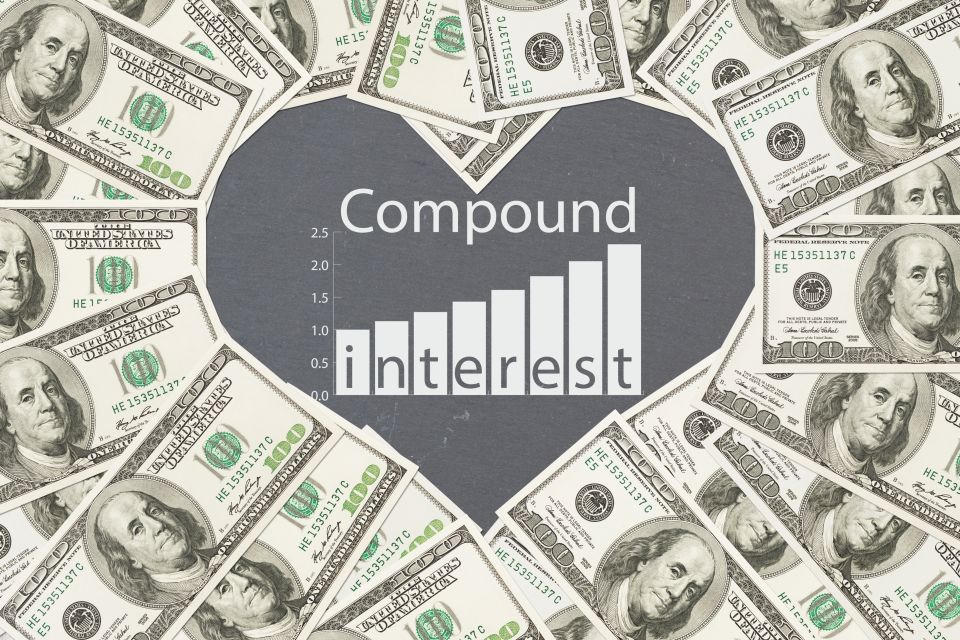Although many investors (and non-investors) have heard about compound interest, few really understand its importance to grow your money in an almost magical (actually, mathematical) way.
Many people who invest in the stock market have heard of compound interest, however, they are unaware of what it is, how it works and, above all, the growth advantages it provides to their investments. Let’s not say everything that those who do not invest do not know. Whether you are in the first or second group, here we will explain the magic of compound interest in investment performance and how it can make you a millionaire over time.
Compound interest is the generated yield interest calculated on the initial capital and the accumulated interest of previous periods. In other words, it is a percentage of profit of all the capital accumulated in your investment, regardless of whether it is your initial balance or interest, it all adds up.
Compound interest is also known as “interest on interest” and had its origins in 17th century Italy. It is important that you manage to differentiate compound interest from simple interest, since the latter only calculates and adds interest on the principal amount invested or saved, without taking into account the interest generated previously.
For example, while on a $100 investment with an annual return of 5% simple interest, you will always add $5 to it each year (100 x 0.05 = 5), an annualized return of 5% compound interest will affect the result. of your performance, taking into account the interest generated. Thus, while in two years you would have $115 dollars with simple interest, with compound interest you would have $115.5125 dollars. Do you notice the difference?
The magic of compound interest is that it multiplies your money for each year that passes, whether it is the capital you invest or the interest it generates. Due to the rapid rate at which an investment can grow, there is a formula that would allow you to calculate how much your investment could earn over time, more specifically if you expect to invest for many years.
Compound interest is calculated by multiplying the initial principal amount by one, plus the annual interest rate raised to the number of compound periods minus one. The total initial amount of the loan is then subtracted from the resulting value.
The formula for calculating the amount of compound interest is as follows:
-> Compound interest = total amount of principal and interest in the future (or future value) minus amount of principal today (or present value)
= [P(1 + i)n] – P
= P [(1 + i)n – 1]
Where:
-> P = principal (the money you invest)
-> i = nominal annual interest rate in percentage terms
-> n = number of compounding periods
Let’s apply this formula to an example. Suppose you invest $10,000 for 5 years at an interest rate of 5% per year. This is how the formula would be used.
-> P = $10,000
-> i = 5%
-> n = 5 years
= P [(1 + i)n – 1] = $10,000 [(1 + 0.05)5 – 1] = $10,000 [1.2762815625 – 1] = $10,000 [0.2762815625] = $2,762.8156
So, while your investment of $10,000 dollars, with simple interest, you would only have a profit of $2,500 dollars; With compound interest, you would have an interest income of $2,762.8156.
As another example, while a $100,000 deposit receiving 5% simple annual interest would earn $50,000 in total interest over 10 years, the 5% compound annual interest on $100,000 would amount to $62,889.46 over the same period. If the compounding period were paid monthly over the same 10-year period at 5% compound interest, the total interest would increase to $64,700.95.
And here we only apply the magic of compound interest only with an initial investment that you maintain over time. Profits can be multiplied exponentially if you have the habit of investing with frequent contributions.
In fact, this is the primary goal of individual retirement accounts (IRAs) or 401(k) plans, to get workers to invest as soon as possible and make frequent contributions to grow their money. For 401(k) accounts, you also have the opportunity to receive free money with your employer match.
Suppose you start investing in the market at $100 per month when you are still 20 years old. Then, for example purposes, you average a positive return of 1% per month (12% per year) compounded monthly over 40 years. Now, you find out that a friend, who is the same age, starts investing up to 30 years later. Later, he invests $1,000 a month for 10 years, averaging the same positive return.
When you hit your 40-year savings mark, and your friend has saved for 10 years, your friend will have generated about $230,000 in savings, while you will have a little over $1.17 million. Despite the fact that he has invested 10 times more than you, the miracle of compound interest, over time, makes your portfolio significantly larger, almost five times more than him.

